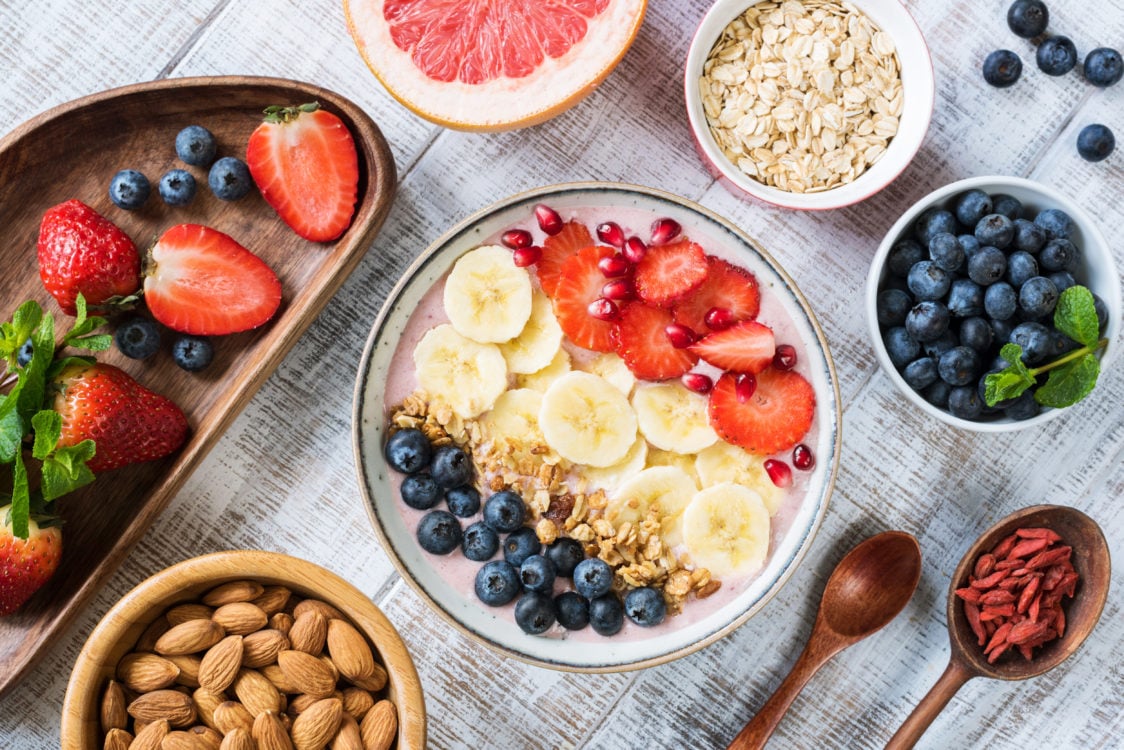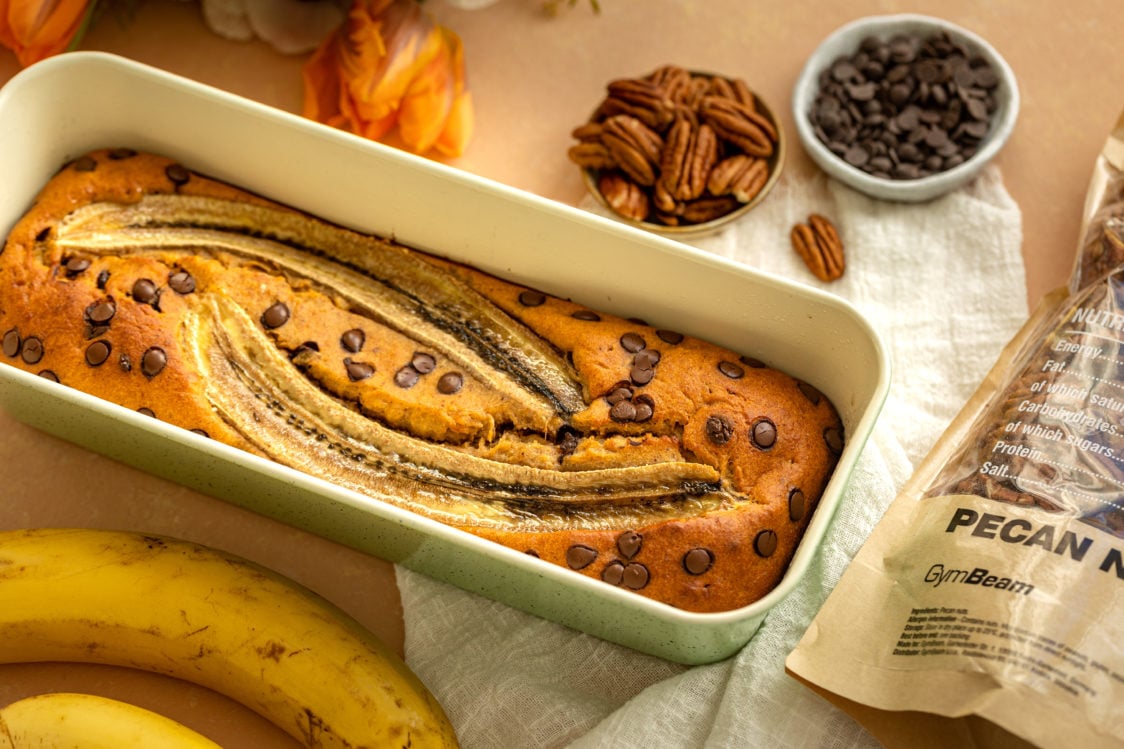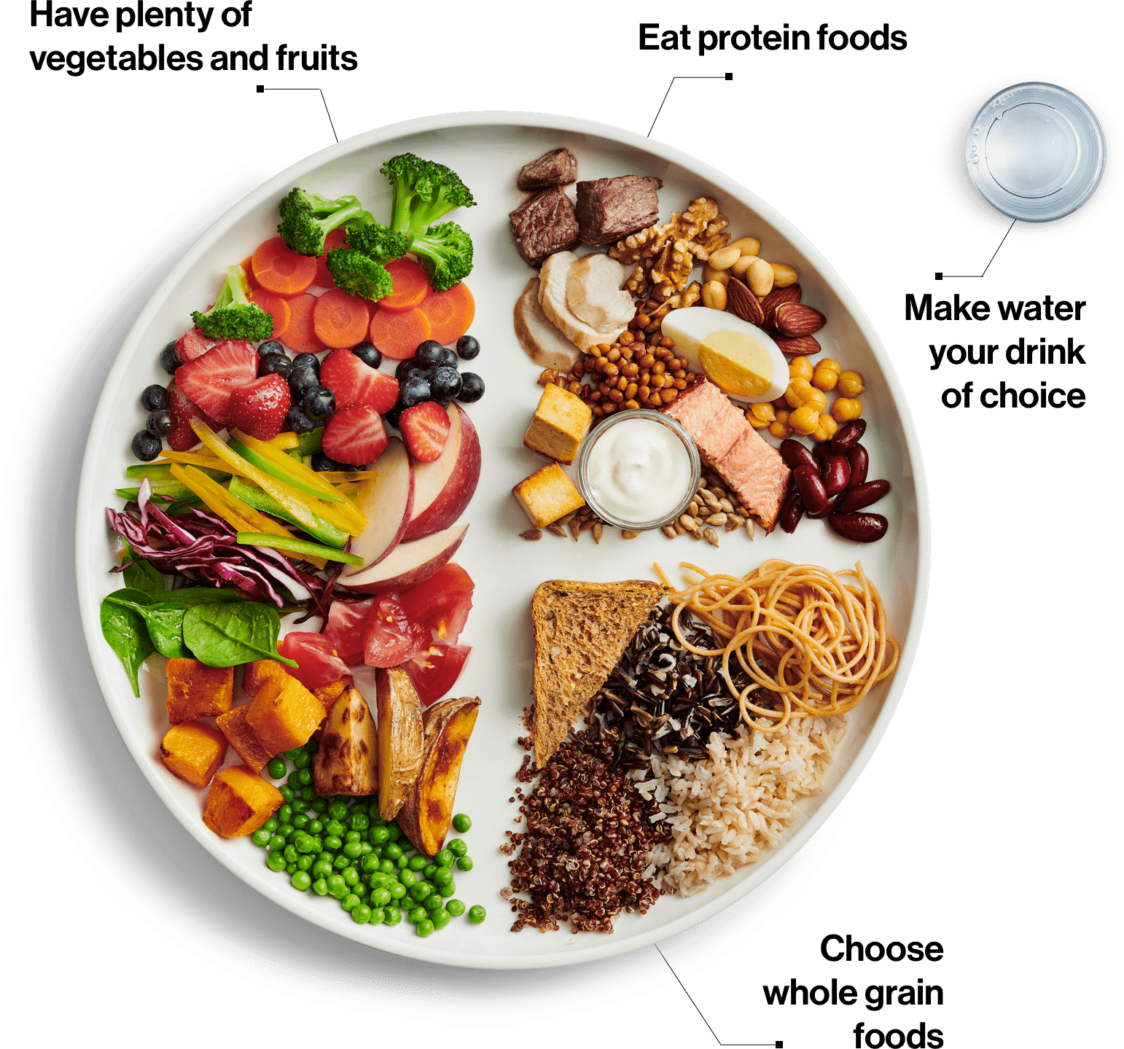Table of Contents
Have you tried repeatedly to limit sweets and sugar in your diet, but it didn’t work for you? You are not alone. Everyone loves sweet taste, but at the same time everyone knows very well that we shouldn’t overdo it with sugar. And then, when you feel determined and motivated, you decide to say goodbye to sugar altogether. You get through a few difficult days thanks to your strong will, but eventually your sweet tooth catches up with you and you start literally dreaming about chocolate at night. Does this scenario sound familiar? Maybe it’s time to try a different approach. How to reduce sugar in the diet to a reasonable level and at the same time not worry about it? Today’s article will help you with that.
What causes sweet cravings?
- Sweet cravings can have many causes. A very common problem is the increased need for sweets in stressful situations. Consumption of sugar increases the level of dopamine and causes pleasant feelings. In psychologically demanding situations some people look for satisfaction in sweets and sweet foods. However, it is not an ideal solution, as the good feeling from eating something sweet wears off in a while. Then your body demands more, in order to once again drive stress and unpleasant feelings into a corner, at least for a while. [6]
- However, getting rid of all sweets in the house can also have physiological causes. Sugar is very quickly absorbed from the digestive tract, and thus quickly increases the level of sugar in the blood (Glycemia). At that moment, you are probably satisfied, full of energy and in a good mood. However, the faster the sugar in the blood rises, the faster it drops, and in no time you will reach a state where you need another “sugar dose”. Suddenly, you get into a vicious circle, when a high intake of sugar causes the need for even more sweets.
A slow and targeted reduction of sugar in the diet can free you from the never-ending spiral of cravings and the de-stressing with sweets. However, to be able to limit sugar in a painless way, the diet must be balanced with enough complex carbohydrates, proteins, healthy fats and fibre. Complex carbohydrates should make up 45-60% of the total daily energy intake, fats 30% and proteins 10-20%. [2,3]
You can read more about how to get rid of your sweet tooth in the article 15 Ways to Fight Sugar Cravings.

Why can sugar be harmful?
Sweet cravings are not the only problem caused by high sugar content in the diet. We all know that sugar can also cause health issues. What exactly is it about?
- A high intake of sugar increases the total daily energy intake. At the same time, it is often part of foods that contain a lot of fat and are very rich in energy, such as various chocolates, bars, desserts and other sweets. Sugar is thus a common part of highly industrially processed foods, which have a lot of energy in a small amount, but only few valuable nutrients. Excessive eating of these products can lead to an increase in body weight and thus also to overweight and obesity.
- Obesity is a health problem in itself, but it also further increases the risk of cancer, cardiovascular problems or type 2 diabetes. Obesity is also associated with a higher risk of depression and other mental illnesses. [5]
- An excessive amount of sugar in the diet is not good for your teeth either, as it increases the risk of tooth decay. In the oral cavity, sugar is processed by bacteria, and the result of this process is creation of acids that can damage tooth enamel. Particularly risky are foods that stick to your teeth – e.g. dried fruit, cookies, gummies, etc. They remain in the mouth for a long time and your teeth are exposed to the long-term work of bacteria and the formation of acids. [11,12]
- High sugar content can also affect your skin and increase the risk of acne. You can read more about this in our article How to Get Rid of Acne? Less Stress, Healthy Weight and Good Hygiene Can Help.

Is sugar a drug, and can you be addicted to it?
Humans are strongly attracted to sugar and the sweet taste, and many find it difficult to reduce sugar in their diet to the point where they believe they are addicted to it. This belief is even supported by the fact that sugar consumption causes similar processes in the brain as, for example, drug use. Scientists aren’t 100% certain yet, but it seems that sugar addiction may be real. If so, it is much weaker compared to other addictions. Moreover, it is likely that it is not the sugar itself that makes you indulge in delicious food again and again. Rather, it is the irresistible taste of foods rich in sugar, fat, or salt (so-called hyper-palatable foods). You have surely experienced that it is not only sugar that attracts you so much, but also various fatty foods such as chocolates, desserts, fatty sausages, or basically any fast food. Overall, these are highly industrially processed products. [4,6,11]
Even though it seems that food addiction is real, it does not mean that there is nothing that can be done about it. Targeted changes in diet can really work wonders and reduce the urge to indulge in these highly processed foods.
How much sugar is safe in the diet?
Your goal doesn’t have to be a diet with zero sugar content. For most people, eating like this is unnecessary suffering and not a good long-term solution. A much better way is a high-quality diet with a balanced content of complex carbohydrates, proteins, healthy fats and fibre, in which you can also enjoy a small amount of sugar.
According to the recommendations of the World Health Organisation (WHO), sugar should not make up more than 10% of your total daily energy intake. The reference value of energy intake for a healthy adult is 2,000 kcal. 10% of the intake therefore represents 200 kcal, which corresponds to 50 g of sugar (about 10 sugar cubes). This amount of sugar can be found, for example, in two large bananas, 500 ml of orange juice or, for example, in 90 g of milk chocolate.
The maximum recommended daily intake includes both added and naturally occurring sugar (for example, in fruit or dairy products). First of all, it is necessary to limit especially added sugar. Naturally occurring sugar, for example in fruit, is bound to fibre, which is why it is absorbed more slowly. [7]
You might be interested in these products:
8 Tips to Reduce the Sugar Content in the Diet
1. Reduce the amount of sugar gradually
Don’t make the same mistake again and don’t exclude sugar completely. Every change for the better is a good change, and therefore it is enough if you reduce sugar in small steps. Gradually limiting the amount of sugar in food or drinks will help you get used to a less sweet taste. [8]
For example, if you cannot live without homemade cakes, continue to bake them, but reduce the amount of sugar by a quarter, for example. Follow the same procedure for sweetened tea, coffee, etc. Add, for example, half a teaspoon of sugar less. Over time, you’ll probably be able to reduce it even more.
2. Replace the sugar with sweeteners at least partially
The best way to reduce sugar in the diet is to gradually get used to a less sweet taste. For example, sweeteners can be a great help, as they can be used to replace sugar. They can help you to reduce the amount of sugar in baking recipes or you can enjoy sweet drinks without having to actually add sugar.

There are two types of sweeteners. Non-nutritive, which do not provide you with any energy, or nutritive, which still have significantly fewer calories compared to sugar. [10]
What sweeteners can you choose from?
Non-nutritive sweeteners:
- Stevia is a plant originating from South America, which is used to make a sweetener due to its sweet taste. The glycosides known under the name stevioside are responsible for the sweet taste. And these glycosides make up the sweetener, which you can buy, for example, in the form of drops or powder. Stevia sweetener is 200-300 times sweeter than sugar. [9]
- Sucralose is another non-nutritive sweetener. It is up to 600 times sweeter than sugar. It is often a part of various non-nutritive drops and syrups that are used for sweetening. If you want to get more information about sucralose, read our article Sucralose – an Artificial Sweetener and Its Impact on Health. [1]
- Erythritol is also non-caloric as its energy value is 0 kcal. Compared to classic sugar, it has approximately 70% sweetness. In reality, this means that you need to use a little more erythritol than sugar for sweetening to achieve the same effect.
Nutritive sweeteners:
- Xylitol belongs to nutritive sweeteners and is also known as birch sugar. The sweetening power of xylitol and as intense as of sugar, but it has 40% less energy.
- Chicory syrup is a sweetener made from chicory root. Thanks to this, it is rich in fibre (inulin) and can help increase its intake in the diet. Only 5% of the chicory syrup content is sugar. Compared to sugar, it has 45% fewer calories. It will also please those who are looking for a way to replace honey, because the consistency and taste of these two are very similar.
You can find out more about sweeteners in the article Sugar Substitutes – Which Sweetener Is Right for You?
3. Limit sugar in drinks
Sugar in drinks is often the biggest surprise. Who would have thought that 0.5 l of flavoured mineral water could contain up to 80 kcal (336 kJ) and 20 g of sugar? In terms of sugar content, this amount is equivalent to, for example, 30 g of milk chocolate.
If you drink 500 ml of sweetened mineral water during the day, that’s half of the maximum daily recommended dose of sugar according to the WHO (50 g for an average healthy adult). In addition, sugar from drinks is absorbed much faster than sugar from food. The result is a rapid increase in blood sugar, probably followed by a sharp decrease and accompanied by more sweet cravings. Drinks will also not stop you from being hungry, but yet they will add a large number of calories.
The problem lies not only in soft drinks and flavoured mineral water, sugar also lurks in juice, iced tea, flavoured beer or, for example, energy drinks.
How much sugar do you consume by drinking different drinks?
| Mineral water sweetened with sugar | 25 g |
| Sprite | 41 g |
| Vinea | 47.5 g |
| Fanta | 35 g |
| Coca-cola | 56 g |
| Pepsi | 55 g |
| Sweetened ice tea | 25 g |
| Non-alcoholic cider | 35 g |
| Energy drink | 50 g |
| Juice | 50 g |
You can see from the table that 500 ml of sweetened drink (a quantity that can be easily drank within a few minutes) often covers the maximum recommended intake of sugar per day. Sweetened drinks should therefore be one of the first products you limit when trying to reduce the amount of sugar in your diet.
However, many people can be surprised by the amount of sugar that one gets throughout the day by drinking sweetened coffee or tea. Have you ever come across the argument “Well, I’m only having one teaspoon of sugar”? However, if you add one teaspoon of sugar to your morning and afternoon coffee and treat yourself to some tea in the evening, it adds up to around 15 g of sugar in total. And before you know it, a third of the maximum recommended intake of sugar is reached.
You can find out more about sugar in drinks in the article Where Are Liquid Calories Hiding and How Do These Empty Calories Prevent You from Losing Weight?
How to reduce the amount of sugar in drinks?
- Reduce the serving of sweetened drinks. Instead of the daily 500 ml of lemonade, drink only 200 ml, for example. This will reduce the amount of sugar you take in, but you can still enjoy your favourite drink. If you switch 500 ml of cola containing 50 g of sugar for 200 ml, you will consume 30 g of sugar less.
- Dilute the sugary drinks. Juice or sweetened mineral water are tasty even when mixed with still or sparkling unsweetened water. Pour yourself a smaller amount of drink and fill the rest of the glass with one of these liquids. Gradually increase the proportion of plain water.
- You can diversify your liquid intake with drinks flavoured with non-nutritive sweeteners.
- When you are used to sweetening your tea or coffee, reduce the amount of sugar in half at the beginning to gradually get used to the less sweet taste. If you don’t want to give up sweet coffee or tea, you can always try one of the sweeteners.
- It can also help to replace sugar in coffee with milk. The coffee will be smoother and slightly sweeter thanks to the natural sugar content in milk.
The base of your liquid intake should be water, mineral water or unsweetened tea. For variety, it is possible to flavour them with, for example, lemon juice, various herbs (mint, lemon balm, etc.), fruit (infuse fresh or freeze-dried fruit in the water) or you can flavour the water with BCAA.

4. Eat less candies and sweetened foods
The most sugar in food is in desserts, cookies, chocolates, soft pastries (croissants, bread rolls, etc.), cakes and other foods from the endless list of sweets. They hide and wait for you at every turn, and it’s so hard to resist. No wonder, because these foods evoke such pleasant feelings with their irresistible combination of sugar and fat.
However, apart from sugar and mostly low-quality fat, they provide almost no other nutrients. They are nutritionally poor foods, which are mainly a source of a large amount of calories. For example, one 50g chocolate bar can have around 250 kcal (1050 kJ), which corresponds to a meal consisting of a slice of rye bread, cream cheese and two slices of hard cheese. These foods are energetically the same, but after eating them you will feel significantly different. Bread with cheese can satiate you for a longer time, whilst a chocolate bar satisfies only your current sweet cravings. You’ll get hungry again in a little while and the sweet cravings will probably return as well.
How to reduce the amount of sweets in your diet?
- Do not take these foods home. There’s a smaller chance you’ll crave something you can’t see. Also, you can’t eat what you don’t have at home.
- When cravings for sweets are also accompanied by hunger, first of all, eat a wholesome meal. Instead of cookies for breakfast, reach for yogurt with fruit. Such a meal will fill you up and probably reduce your sweet cravings.
- Treat yourself to sweets, but in smaller quantities. If you add a small amount of the aforementioned favourite cookies to the yogurt with fruit, you will satisfy your appetite and get full at the same time.
- Find less sweet versions of your favourite treats. Replace milk chocolate with an alternative with a higher cocoa content. Try cookies with whole wheat flour and lower sugar content, etc.
- Protein bars can also serve as nutritious sweets. They suppress the sweet cravings, and since they are typically sweetened with sweeteners, you will not consume any sugar, and at the same time, thanks to their protein content, they will also fill you up.

5. It is better to sweeten your food yourself
A huge amount of sugar is contained in foods in which sugar doesn’t even have to be. The diet of many people is full of flavoured yogurt, sweetened kefir milk or, for example, sweet breakfast cereals.
The sugar content in the mentioned foods (and many others) is usually too high. On the other hand, when you buy an unsweetened version of the food and flavour it yourself, you may be surprised to find that the less sweet taste might be enough for you. This way you can also influence the amount of sugar in foods and still enjoy their pleasant sweet taste.
How do sweetened and unsweetened versions of some products differ in sugar content?
| Plain yogurt | 3.5 g | Flavoured yogurt | 12.5 g |
| Plain kefir milk | 4 g | Flavoured kefir milk | 10.5 g |
| Muesli | 16 g | Baked muesli | 25 g |
| Unsweetened instant oatmeal | 1 g | Sweetened instant oatmeal | 20 g |
According to the table, it is obvious that it is healthier for you to buy unsweetened foods. You can always flavour them yourself and make them more pleasant according to our preferences. Often, the resulting sugar content will be lower than that of purchased sweetened variants.
How to flavour basic unsweetened products and how they differ from the sweetened ones?
| Sweetened Product | Sugar Content / Serving | Unsweetened Product Flavoured at Home | Sugar Content / Serving |
|---|---|---|---|
| Flavoured fruit yogurt (150 g) | 19.5 | Plain yogurt with a spoonful of jam Plain yogurt with chicory syrup | 10 g 5.2 g |
| Flavoured kefir milk (300 ml) | 33 g | Plain kefir milk with a spoonful of cocoa and chicory syrup | 13.3 g |
| Instant oatmeal sweetened with sugar (55 g) | 13 g | Oatmeal with 100 ml of milk and 1 tsp of chicory syrup Oatmeal with 20 g of whey protein | 5.4 g 1.1 g |
| Baked muesli (50 g) | 10 g | Homemade granola, for example this one made from oats, quinoa and nuts | 2.3 g |
If you spend a few minutes preparing something sweet, you will get a more varied and interesting diet.
What can you use to sweeten food?
- Use mainly fresh fruit. Alternatively, you can replace it with freeze-dried fruit.
- If you want something more unconventional, you can try adding fruit powder. Yogurts, porridges and other foods can be flavoured with a spoonful of jam.
- You can add granola or muesli to yogurt, cottage cheese or sour drinks, which give the meal a sweet taste.
- Another options include non-nutritive or nutritive sweeteners.

6. Use less sugar in baking and cooking
Most recipes for cakes, muffins, desserts, pancakes or crêpes usually contain an amount of sugar, which would be enough for a double portion of them. For example, two slices of cake can contain 15 g of sugar, which is a third of the maximum recommended daily intake.
These tips can help you to reduce the sugar content:
- Gradually reduce the amount of added sugar. First, reduce it by a third, for example, later you can try half the amount.
- Partially or completely replace sugar with sweeteners.
- Replace the added sugar with fresh fruit. Mashed banana or grated apple work great when baking.
- Adding a flavour other than sweet can also help with limiting sugar. Invigorate your cakes with different spices, for example cinnamon, vanilla or gingerbread spice.
For more inspiration, read our article How to Make Christmas Baking Healthier?

7. Eat enough complex carbohydrates, proteins and fibre
Frequent cravings for sweets and a high need for sugar are often the result of an unbalanced and poor-quality diet. When there is a lack of complex carbohydrates, proteins or fibre in the diet, the body reacts with a demand for a quick and rich source of energy.
A person who eats croissants with Nutella for breakfast and orders a pizza for lunch will probably have a much bigger sweet cravings during the day than someone who indulges in white yogurt with oats and fruit in the morning and fish with potatoes and vegetables for lunch.
To reduce sweet cravings, follow the principles of a Healthy Plate – fill ½ of your plate with vegetables or fruits, assign ¼ of your plate to complex carbohydrates and load up the remaining ¼ of your plate with protein. You can read more about how to put together a balanced diet in the article What Is a Healthy Diet and How to Learn to Eat Healthy?

8. Read labels on food packaging and keep an eye on the sugar content
A large amount of added sugar can also hide where you wouldn’t expect it. Therefore, it is necessary to read food labels.
First of all, pay attention to the composition of the food. The food contains the most ingredients that are at the top of the list. The earlier you come across sugar in the ingredients list, the more of it is going to be in the food.
Don’t get fooled by sugar hidden behind a different name either.
Which foods actually still contain sugar?
- Fructose Syrup
- Corn Syrup
- Beet Sugar
- Coconut / Brown / Cane Sugar
- Maltodextrin
- Maltose
- Honey
- Rice / Maple / Date / Agave Syrup
The second most important place to look at after checking the ingredients list is the nutritional table. There you will find the total content of carbohydrates and below them a box called “of which sugars“. The lower the sugar content, the better.
However, the term sugar covers both added and naturally occurring sugar. Sugar is found naturally in fruits and dairy products, so don’t be surprised when a few grams of sugar appear in the nutrition table on the package of a plain yogurt. That is why it is advisable to combine reading the table and the ingredients list in order to know what is the source of the contained sugar.
You can learn more about reading and understanding food labels in the article How to Read Food Labels and What to Watch Out for?
What should you remember?
An excessive amount of sugar in the diet leads to obesity, which increases the risk of cardiovascular, tumorous and other diseases. It is therefore necessary to limit sugar. However, it is not necessary to get rid of it completely, but to reduce it so that it makes up less than 10% of your total energy intake.
Reduce the sugar content gradually. Focus on limiting sugary drinks, use less sugar when baking, prioritise unsweetened food options, and flavour them in your kitchen instead. At the same time, don’t forget to keep an eye on the labels on the food packaging and make sure you have a balanced diet containing all nutrients. It will help if you focus on choosing as many basic foods as possible and less processed ones. You will automatically reduce the sugar content and increase the quality of your diet.
Do you have friends who would appreciate information on how to reduce sugar in their diet? Don’t keep the article to yourself and share it with them.
[1] DUYFF, R.L. Complete Food & Nutrition Guide. . New York: Academy of Nutrition and Dietetics, 2017. ISBN 978-0-544-52058-5.
[2] EFSA PANEL ON DIETETIC PRODUCTS, NUTRITION, AND ALLERGIES (NDA) Scientific Opinion on Dietary Reference Values for carbohydrates and dietary fibre. – https://www.efsa.europa.eu/en/efsajournal/pub/1462
[3] EUROPEAN FOOD SAFETY AUTHORITY Scientific Opinion on Dietary Reference Values for protein. – http://onlinelibrary.wiley.com/doi/10.2903/j.efsa.2012.2557/epdf
[4] GREENBERG, D. - ST. PETER, J.V. Sugars and Sweet Taste: Addictive or Rewarding? [https://www.ncbi.nlm.nih.gov/pmc/articles/PMC8468293/[
[5] MALIK, V.S. et al. Intake of sugar-sweetened beverages and weight gain: a systematic review. – https://www.ncbi.nlm.nih.gov/pmc/articles/PMC3210834/
[6] WESTWATER, M.L. et al. Sugar addiction: the state of the science. – https://www.ncbi.nlm.nih.gov/pmc/articles/PMC5174153/
[7] WHO Guideline: sugars intake for adults and children. – https://www.who.int/publications-detail-redirect/9789241549028
[8] WISE, P.M. et al. Reduced dietary intake of simple sugars alters perceived sweet taste intensity but not perceived pleasantness. – https://academic.oup.com/ajcn/article/103/1/50/4662855?login=false
[9] EUFIC Stevia: a natural sweetener with potential.– https://www.eufic.org/en/whats-in-food/article/stevia-a-natural-sweetener-with-potential
[10] CLEVELAND CLINIC Sugar Substitutes. – https://my.clevelandclinic.org/health/articles/15166-sugar-substitutes--non-nutritive-sweeteners
[11] EUFIC Sugars: Addressing Common Questions and Debunking Myths. – https://www.eufic.org/en/whats-in-food/article/sugars-addressing-common-questions-and-debunking-myths
[12] WHO Sugars and dental caries. – https://www.who.int/news-room/fact-sheets/detail/sugars-and-dental-caries

